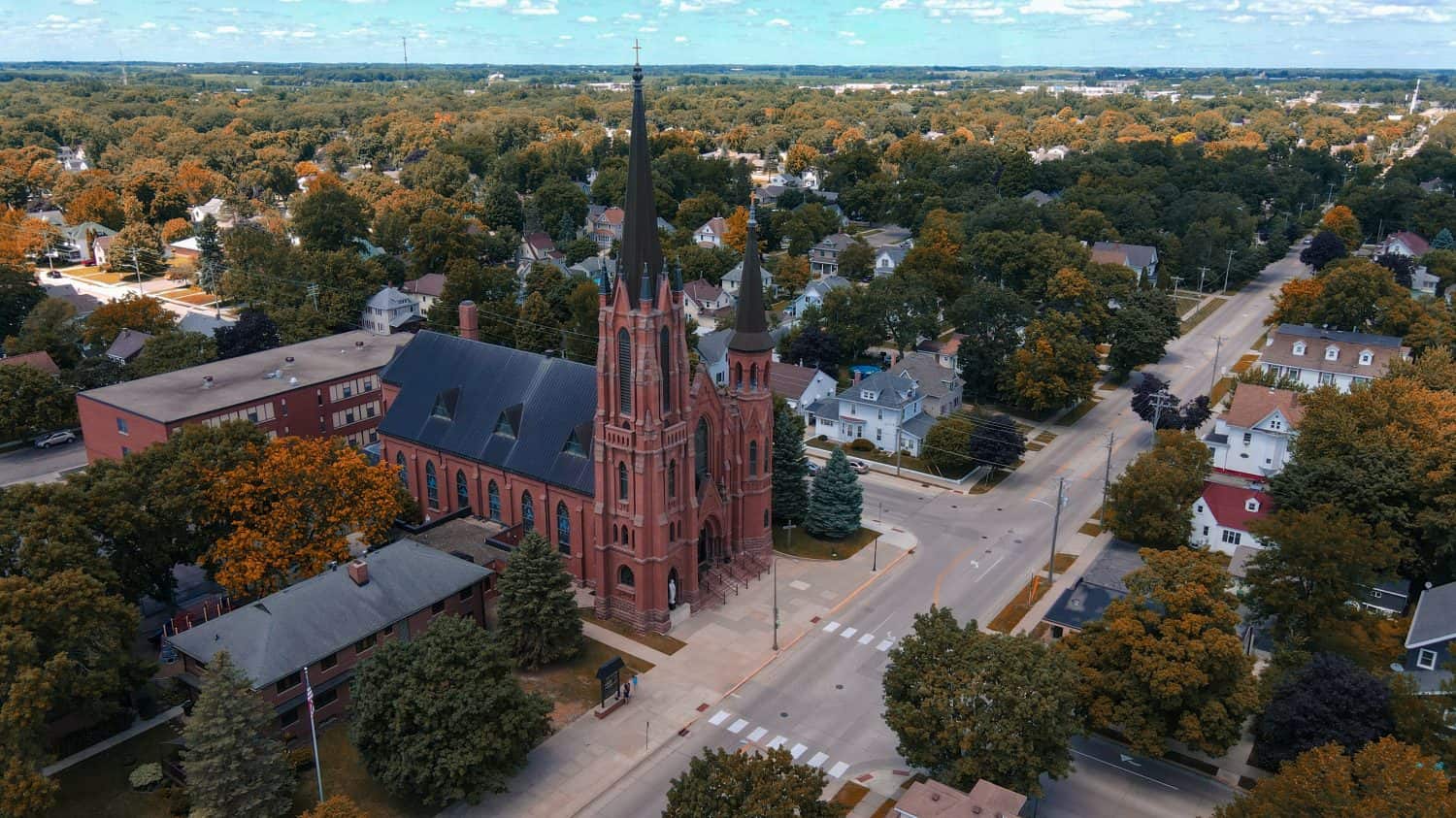The United States is a treasure trove of many climate zones, tourist attractions, and more. When you search for your next vacation spot, you might be surprised to learn that there are many cities that share the same name, like Austin and Austin. Found in Texas and Minnesota, the local economy and population are only the tips of this iceberg.
With the massive difference between just the size the Texas and Minnesota cities, there’s so much more to learn. While they both have humid environments, that is seemingly the end of the similarities. Check out the ways that these two cities that share a name differ in nearly every other way.
Comparing Austin, TX vs. Austin, MN
| CITY | CITY | |
| Location | Texas | Minnesota |
| Population | 966,292 | 26,325 |
| Local climate | Humid subtropical | Humid subtropical |
| Common wildlife | Coyotes, foxes, bats, raccoons, possums, skunks, deer, and snakes | Deer, mink, raccoons, salamanders, porcupines, foxes, and wild rodents |
| Common plants | Live oak trees, cedar elm trees, Carolina buckthorn, purple baptisia, and bottlebrush | Common buckthorn, wild bergamot, box elder, and red canary grass |
| Place of interest | South Congress shopping district | SPAM Museum |
| Cost of housing | $517,000 | $184,900 |
| Violent crime rates | 467 per 100,000 people | 25 per 100,000 people |
| Age | 184 years | 100 years |
Key Differences of Comparing Austin, TX vs. Austin, MN
Comparing Austin, TX vs. Austin, MN: Population

The Minnesota-based city has less than 3% of the population of Austin, TX.
©DBjorgo/Shutterstock.com
If you look at these two cities, the most significant difference you’ll notice is the population. Austin is a hotspot for tourist activity and one of the biggest cities in Texas. The current population for 2023 is almost 1 million people,
The Minnesota city is significantly smaller. Not only does this city especially fall short of the 900,000 people in the Texas city, but it barely reaches a fraction of it. With about 26,000 people within the city, it isn’t a major hotspot for tourism or employment, but the two cities share similar climates.
Comparing Austin, TX vs. Austin, MN: Common Wildlife

Deer are commonly found in Austin, TX, and Austin, MN.
©Danita Delimont/Shutterstock.com
Even with both cities’ shared humid subtropical climate, the local wildlife varies greatly. Situated in the country’s southern region, Texas’s Austin is home to many animals that thrive well in the desert. Since this central city falls in zone 8 of the USDA hardiness scale, the only plants that thrive in this region can’t survive below 20° F. The most common animals in the area include coyotes and foxes, bats, deer, snakes, raccoons, and possums.
You’ll notice a few similarities if you take the lengthy drive to Minnesota to see their wildlife. You still see deer, raccoons, and other forest animals in Minnesota. You also have the opportunity to see salamanders in their natural habitat because the USDA hardiness zone of this city is 4. Animals in this area have the ability to withstand temperatures as low as -25° F without a risk to their health. Porcupines also call the small Minnesota city their home.
Comparing Austin, TX vs. Austin, MN: Common Plants

With 5-inch leaves, the Carolina buckthorn of Texas is much bigger than the common buckthorn in Minnesota.
©Gerry Bishop/Shutterstock.com
While similar environments could typically create a suitable climate for similar plants to grow, the drastic difference in the USDA hardiness zones changes which plants can grow there. In the Texas-based city, live oak trees are one of the most common plants among the many tree species. The city also has many cedar elm trees, complemented by the local Carolina buckthorn, purple baptisia, and bottlebrush that grow there.
While buckthorn also grows in Austin, MN, this city usually only sees common buckthorn, which is a bit smaller. Minnesota’s town also includes wild bergamot, box elder, and red canary grass. These plants can easily survive the harsher winters of the northern state, which is not a feat that plants like the bottlebrush or purple baptisia can handle.
Comparing Austin, TX vs. Austin, MN: Places of Interest
In Texas, the South Congress shopping district is one of the most popular places to visit in Austin. With a healthy nightlife and many restaurants, locals and tourists spend plenty of time here. One of Minnesota’s popular activities is a visit to the SPAM Museum. Originally built in 1991, the first name of this museum was the Hormel Foods First Century Museum. It was in a local mall, but the closure forced the museum to move to a different location in Minnesota in 2016.
Comparing Austin, TX vs. Austin, MN: Cost of Housing

The beautiful neighborhoods in Austin, TX, can be credited to incredible employment opportunities, consistent population growth, and stability in the Texas economy.
©Roschetzky Photography/Shutterstock.com
Just like the drastic difference in population (above) and crime (below), these two cities have strikingly different living costs. If you manage to secure a home loan in Texas’s city, you’re looking at $517,000 as the median sale price of many homes. In Minnesota, the median sale price of local homes isn’t even $200,000.
Could the local income levels make a difference? In the Texas-based Austin, the average income is $122,300, which puts locals into the middle-class income tier for the most part. This elevated ranking makes expensive homes easier to afford. In Minnesota-based cities, the average salary is about half of Texas’s $69,000. The local poverty rate is 15%, but anyone who manages to maintain the average wage is still considered to be middle class locally.
Comparing Austin, TX vs. Austin, MN: Violent Crime Rates
If you want to go somewhere safe, the better path would be the one that leads you to Minnesota. With such a highly populated area in Texas, it shouldn’t be surprising that Austin has 467 violent crimes for every 100,000 people. After all, in a city of nearly 1 million people, that means that almost 5,000 people experience a violent crime every year, which doesn’t account for the substantial property crimes as well.
In Minnesota, the numbers are much lower. For every 100,000 people, fewer than 25 violent crimes happen a year. Since the local population is just over 25% of that, an average of just seven people experience a violent crime in Austin, MN, each year.
Comparing Austin, TX vs. Austin, MN: Age
The founding of the Texas-based city occurred only a few decades before Minnesota’s Austin. Established in January 1839, the town was originally a village in Waterloo, which was famous for the buffalo hunting offered in the area. It became the Republic of Texas in 1839, named for Stephen F. Austin. While local tribes previously inhabited it, the influx of German and Spanish explorers paved the way to make it a part of the United States. It has been a college town since 1883.
Minnesota City only became incorporated locally in 1871, though it had been a village since 1868. The first settler in the town came from New York – Austin R. Nichols. Even though this city also got its name from one of its earliest settlers, the path to establishing it was much different than the Texas city.
The photo featured at the top of this post is © Roschetzky Photography/Shutterstock.com
Thank you for reading! Have some feedback for us? Contact the AZ Animals editorial team.






